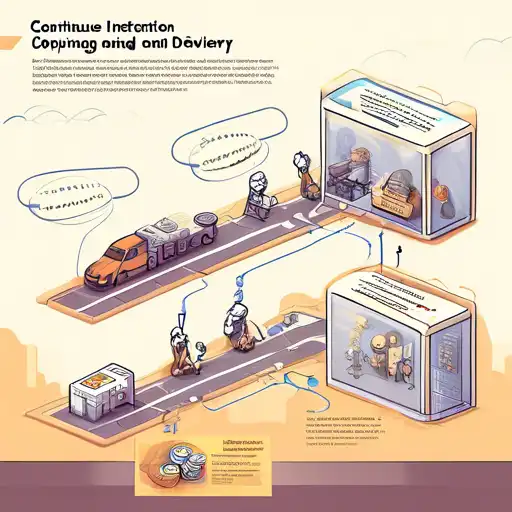What is Continuous Integration and Delivery?
Continuous Integration (CI) and Continuous Delivery (CD) are pivotal practices in the modern software development lifecycle, aimed at improving software quality and speeding up the release process. CI/CD automates the integration of code changes from multiple contributors into a single software project, ensuring that the software can be reliably released at any time.
The Core Principles of CI/CD
At its heart, CI/CD is about automating the software release process. Continuous Integration involves automatically building and testing code every time a team member commits changes to version control. Continuous Delivery extends this by ensuring that the code can be deployed to production at any time, with the push of a button.
Benefits of Implementing CI/CD
- Faster Release Cycles: Automating the build and deployment process reduces manual errors and speeds up the release cycle.
- Improved Code Quality: Regular testing and integration help identify and fix bugs early in the development cycle.
- Enhanced Collaboration: CI/CD encourages more frequent code commits, leading to better collaboration among team members.
- Reduced Deployment Risk: By deploying smaller changes more frequently, the risk associated with each deployment is significantly reduced.
How to Get Started with CI/CD
Implementing CI/CD requires a cultural shift within the organization, as well as the right tools. Start by integrating a version control system, such as Git, and choose a CI/CD tool that fits your project's needs, such as Jenkins, Travis CI, or GitHub Actions. Automate your build, test, and deployment processes to ensure smooth and efficient workflows.
Best Practices for CI/CD
- Maintain a Single Source Repository: All code should be stored in a version control system to ensure traceability and collaboration.
- Automate the Build Process: Automating the build process ensures that the software can be built with a single command, reducing manual errors.
- Test in a Clone of the Production Environment: Testing in an environment that mirrors production helps identify environment-specific issues early.
- Make Every Commit a Potential Release: With CD, every commit that passes the automated tests should be ready for production.
Adopting CI/CD practices can transform your software development process, making it more efficient, reliable, and scalable. By automating the integration and delivery processes, teams can focus on creating high-quality software that meets the needs of their users.
For more insights into DevOps practices, check out our guide on DevOps Best Practices.
